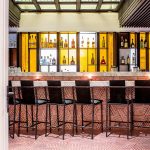Hecho a Mano, Chilean Crafts Hotspots
For collectors of curiosities and handicrafts, there are some great items unique to Chile that you can pick up at some of the local handicrafts markets. But if you’ve got a little more time, and want to meet the artisans themselves, a bit of travel may be in order. Here are our some of our favorite towns that have craft specialties that might just make it into your suitcase before you leave the country.
Pomaire
Pomaire is a town about a 45-minute drive from Santiago, where the specialty is items made of greda, a local terracotta that comes in colors from brick red to dark brown. It is popularly seen as the serving vessel for some of Chile’s iconic food dishes, including pastel de choclo or chupe de jaiba, and in Pomaire, comes in many forms, from rimmed and unrimmed bowls, to small three-legged pigs (said to bring good luck), through incised candle-holders and vases. A couple of stores have glazed pieces, where generally some of the terracotta is left visible, and the interior is glazed with fused glass. While in Pomaire, it’s traditional to have a big Chilean meal. Cazuela (a beef or chicken soup) is popular, as is a giant beef empanada, though vegetarian versions are also available.
Chimbarongo
This town, which is south of Santiago, and roughly on the way to Santa Cruz, with its luxury wine hotels, and nearby wineries, is where most of the wicker furniture and home furnishings in Chile come from. And while you probably won’t bring home a wicker couch (though you could), there are smaller boxes, light fixtures and planters (often in the form of a tricycle) that add a nice rustic touch. If you’ve got time, relax on the wicker benches in the town square, and check out the main statue there, which has a statue of a mimbre (wicker) weaver, to represent the long-standing tradition of wicker weaving. Mornings and evenings can be misty here, and the humidity is what makes the wicker most pliable, but daytime is usually warm and sunny.
Rari
Farther afield is the small town of Rari. This town, which is in the Maule region, one of the most important agricultural regions in Chile, for fruit, vegetables, and more recently wine grapes, also has what is probably one of Chile’s most unusual artisan-driven industries. Here, mostly women (but some men), dye horse hair bright colors, and make intricate sculptures and jewelry by weaving the stiff hairs together. Popular pieces include butterflies, flowers and witches, but look for seasonal specialties as well. Some are meant to be worn as jewelry, while some are better suited to desks, counters or bookshelves, or in the case of Christmastime, as tree ornaments.
Chiloé
Chiloé, the large island in the mid-south of Chile has many unique cultural and culinary traditions. There is a strong local mythology, some of it likely shared over long evenings by the salamandra (woodburning stove, also used for cooking) during cozy winters. Two crafts that are very popular in Chiloé are woolen items and carved wood. From the local wool, some chilote artisans make woolen sweaters, socks, hats, and blankets, which are perfect for keeping warm in this part of the world. Also typical of Chiloé are carved wooden bowls, often made of raulí, a local beech wood with a very fine grain, and which is reddish in color.
Ovalle and Combarbalá
These cities in the “norte chico” or close north, yield two different stones used for jewelry and ornaments. In the mountains near Ovalle, lapis lazuli, a dark blue stone found only in Chile and Afghanistan is mined, and often combined with silver to make jewelry, or occasionally, handles for kitchen implements. Lapis lazuli is also used in ornaments and small carvings like guanacos (related to camels), or penguins. The other stone, combarbalita, is a marble-like, and mined near the small town of Combarbalá (which also has a nice observatory). Combarbalita has multiple hues, generally in the lavender to orange range, usually striated with white. It is made into smaller and larger items, including decorative bowls.

